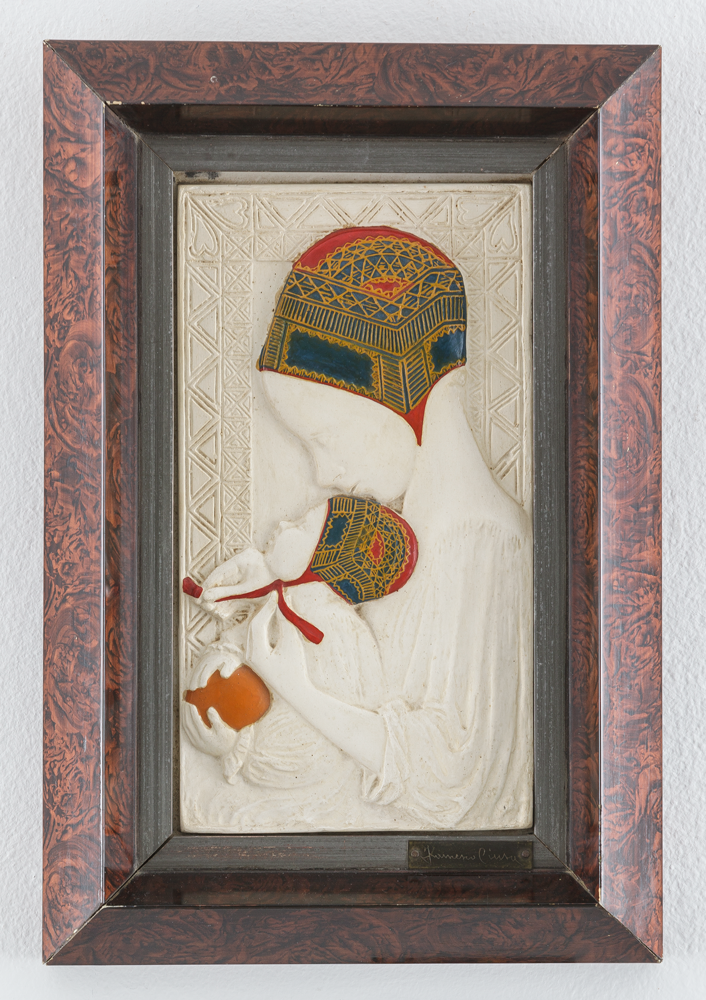Madonna con bambino or Cuffietta di Desulo, 1922 c, cm 23×12,6, bas-relief in plaster
The work Madonna with Child, also known as Cuffietta di Desulo, created by Ciusa in the first half of the 1920s, has a direct connection with the terracotta sculpture dated 1919-21. During this period, the artist turned to decorative arts, drawing inspiration from the rich Sardinian craft tradition, characterized by a wide iconographic repertoire and typical decorative motifs.
In 1919, Ciusa founded Spica – the Society for the Artistic Ceramic Industry, with the aim of producing terracotta works. The manufacturing activity continued until 1924.
The Cuffietta di Desulo depicts a delicate profile of a mother and child, with the mother figure tying the child’s headscarf bow. This is framed by a geometric profile that accentuates its modernity. The typical Desulo headscarf, with its vibrant colors and decorative geometries, becomes a recurring motif in the artist’s ceramic production of those years and can also be found in other works from the same period.
The tones of blue, red, and yellow on the headscarf, which adorn the figure, help to enhance the monochrome white plaster, a characteristic also present in other works, such as The Laughing Child (1925-1932). This sculpture was exhibited in 1932 at the Miramare Gallery in Cagliari during a solo show by Ciusa and represents one of the many subjects the artist revisited on different occasions. Made from materials such as plaster, terracotta, and marble stucco, these subjects testify to the evolution of his artistic research.
The marble stucco, obtained by mixing powdered marble with lime and additives, allows the artist to create a material that is easy to mold, perfect for mass production through the use of molds.
Rita Moro

